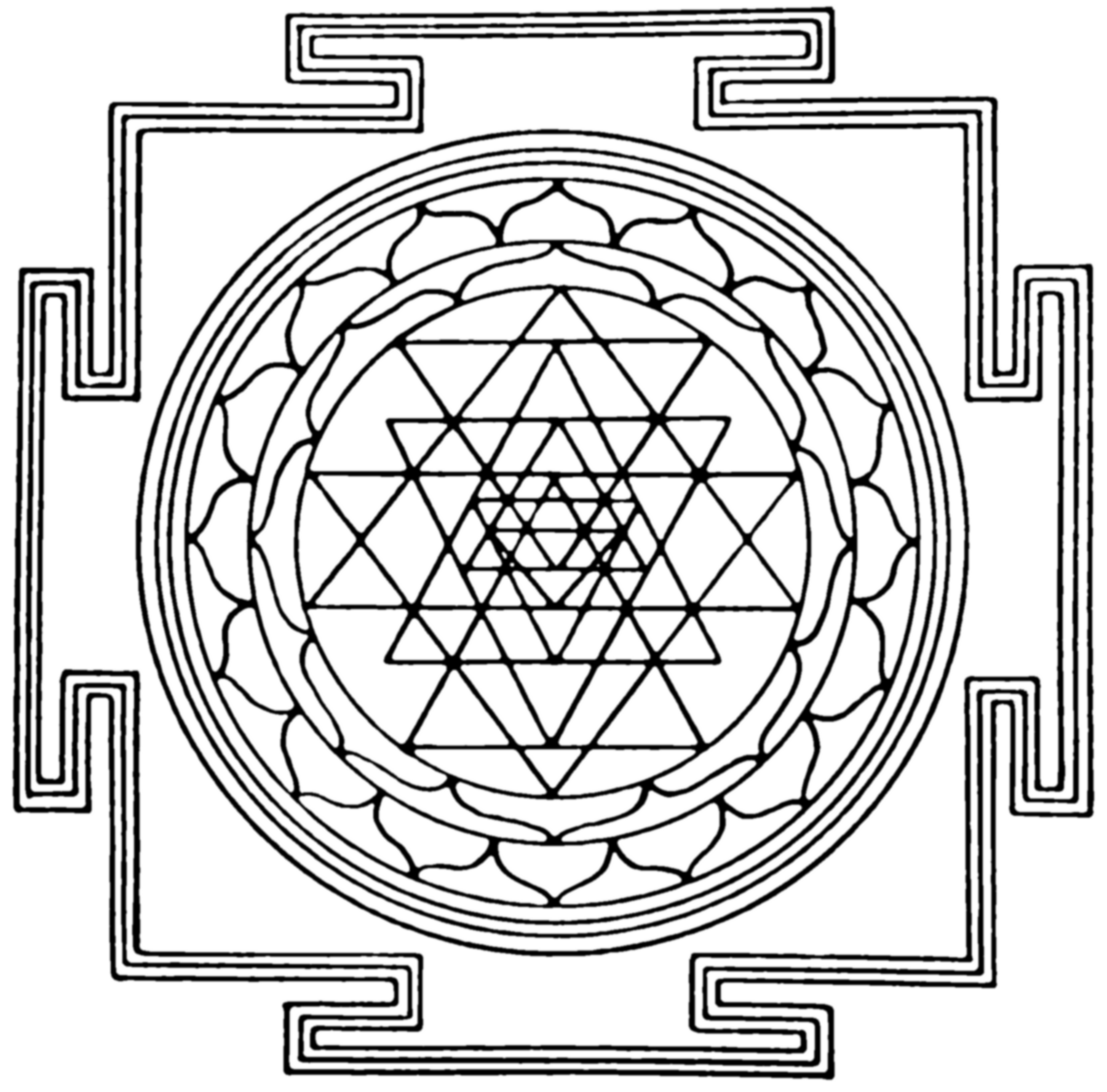Several years ago, I read an article in The Yoga Journal about Yantras. (This was so long ago, I can’t find the reference!) Yantras are artistic renderings of what is meant to be a microcosmic symbol of the macrocosmic universe, used as a meditational tool. The word Yantra in Sanscrit means "instrument for holding". In this article the reader was told to choose a Yantra that resonated with them, print it out, and color it in to use it in meditation.
First I did some research on Yantras. Which unfortunately just confused me on the subject further. In the magazine article the author briefly touched on the meaning of Yantras, tracing them back to India, and Tantric yoga, but gave more esoteric qualities to them. When I looked deeper into the matter, I found that these beautiful symbols represent Hindu deities.
Little is known about these symbols in mainstream western society. This sentiment was echoed in several of the articles I read online. Apparently many westerners have claimed to come up with their own Yantras. As far as I can gather, they were very popular in the late 60's and 70's, when psychadelic drugs and spiritualism went hand in hand. However it is said that a true Yantra may only be created by a Tantric master, prompted by divine inspiration.
Notably, the word Mandala has become more popular than Yantra in our culture. Truthfully it is hard for me to differentiate these two groups of symbols. It seems their main difference is etiology. Mandalas are used more in Tibetan culture, while Yantras are a part of the Tantra tradition, having its roots in age-old teachings from India.
Yantras are indeed quite powerful and they hold many similar design aspects that are meant to resonate with the viewer. For one, they all have a central focal point, called a "bindu". This is where the meditator is meant to focus, letting the surrounding symmetrical shapes remain in the periphery of their vision. The rest of the shapes differ, depending on the specific deity the Yantra represents. There are often triangles, squares, lotus flowers (or petals), surrounded by a line or group of lines that define the Yantra's perimeter. The Yantra is always symmetrical. The purpose of the design is to resonate, and connect the viewer to the divine.
An important part of using Yantras in meditation is through the process of painting, or drawing them yourself. You may create the Yantra on paper, wood or metal using the patterns given by divine inspiration. While coloring in my Yantra, I tried to focus on my specific Yantra's meaning, as stated in the article, which was: "Passion. Direction, purpose, enthusiasm, and independence. This Yantra allows you to realize your dreams and achieve great feats with desire, meaning and joy." I found coloring in the Yantra to be very meditative. While my mind wandered a little, it was good to have the physical action to draw me back in and remind me of my purpose in that moment.
When you are finished making your Yantra, the article said to hang the Yantra on a wall facing North or East, placing the center, Bindu, as your focal point. You are not to look at specific points or shapes on your Yantra, but using the center, focus on the whole image. In The Yoga Journal Article, you are meant to meditate on the specific intention that is ascribed to your Yantra. However through my research, I discovered you are to use the Yantra more as a tool, letting go of intention and allowing the Yantra's specific powers to gradually draw and guide you to the sublime energies of the macrocosm.
Using the Yantra I chose as a meditation tool proved effective. I have always felt that using a focal point helps me reach a meditative state, drawing me out of my "thinking" space, and into my heart. I did use the ascribed intention in my meditation, but only initially. I felt that the design and colors actually helped me to let go of all thought and intention and connect with my deeper self. My universal non-self. I would definitely like to explore this subject further, and learn what these symbols really mean. Ultimately, I believe in meditation you must use the tool that works best for you. That which resonates in your heart, and connects you to the infinite!


